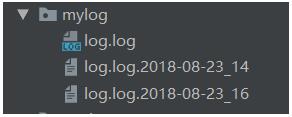您好,登录后才能下订单哦!
密码登录
登录注册
点击 登录注册 即表示同意《亿速云用户服务条款》
本文实例为大家分享了python+logging+yaml实现日志分割的具体代码,供大家参考,具体内容如下
1、建立log.yaml文件
version: 1 disable_existing_loggers: False formatters: simple: format: "%(asctime)s - %(filename)s - %(levelname)s - %(message)s" datefmt: '%F %T' handlers: console: class: logging.StreamHandler level: DEBUG formatter: simple stream: ext://sys.stdout info_file_handler: class: logging.handlers.TimedRotatingFileHandler level: DEBUG formatter: simple filename: ./mylog/log.log #这个路径根据自己的日志存放路径填写 interval: 1 backupCount: 2 #most 2 extensions encoding: utf8 when: H #这里是按小时生成 root: level: INFO handlers: [console, info_file_handler]
2、在自己的app.py中引用log.yaml
import yaml
import logging.config
import os
def setup_logging(default_path='log.yaml', default_level=logging.INFO):
"""
Setup logging configuration
"""
if os.path.exists("mylog"):
pass
else:
os.mkdir('mylog')
path = default_path
if os.path.exists(path):
with open(path, 'rt') as f:
config = yaml.load(f.read())
logging.config.dictConfig(config)
else:
logging.basicConfig(level=default_level)
print('the input path doesn\'t exist')
setup_logging(default_path='./log.yaml')
logger = logging.getLogger()
之后就可以在需要日志的业务节点上使用logger.info或者其他级别输出日志信息
3、生成的日志文件效果

以上就是本文的全部内容,希望对大家的学习有所帮助,也希望大家多多支持亿速云。
免责声明:本站发布的内容(图片、视频和文字)以原创、转载和分享为主,文章观点不代表本网站立场,如果涉及侵权请联系站长邮箱:is@yisu.com进行举报,并提供相关证据,一经查实,将立刻删除涉嫌侵权内容。